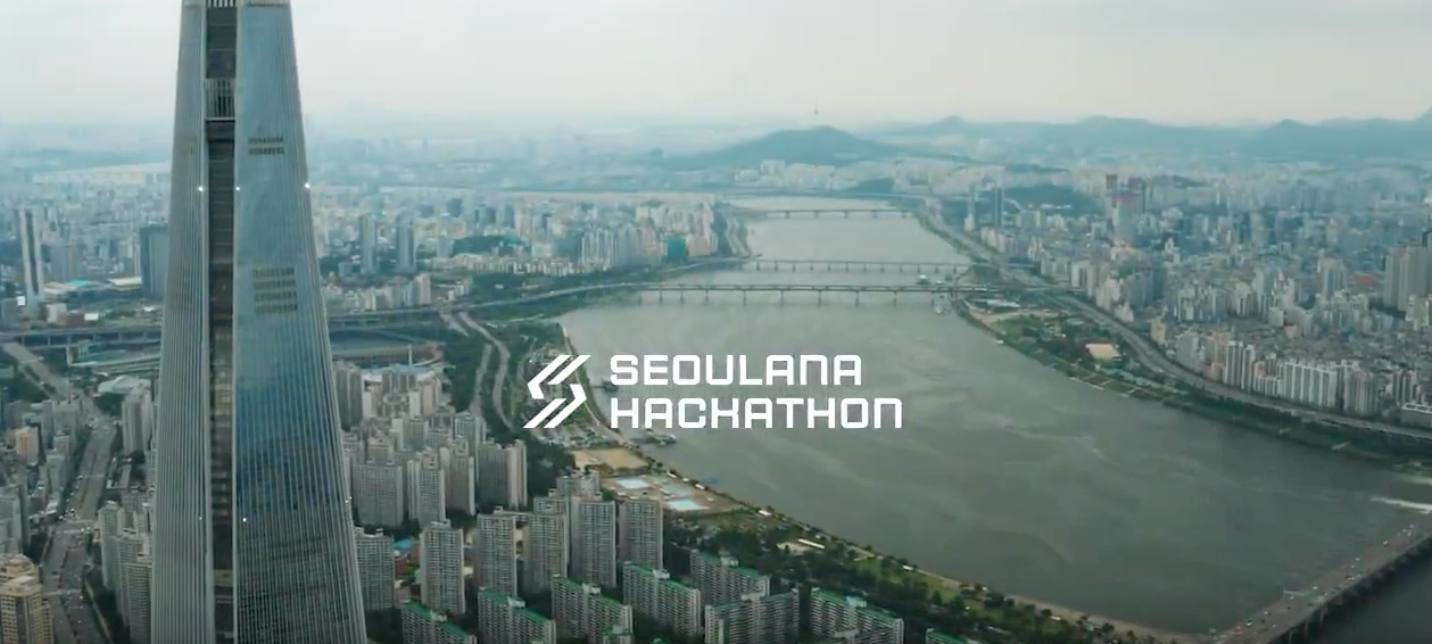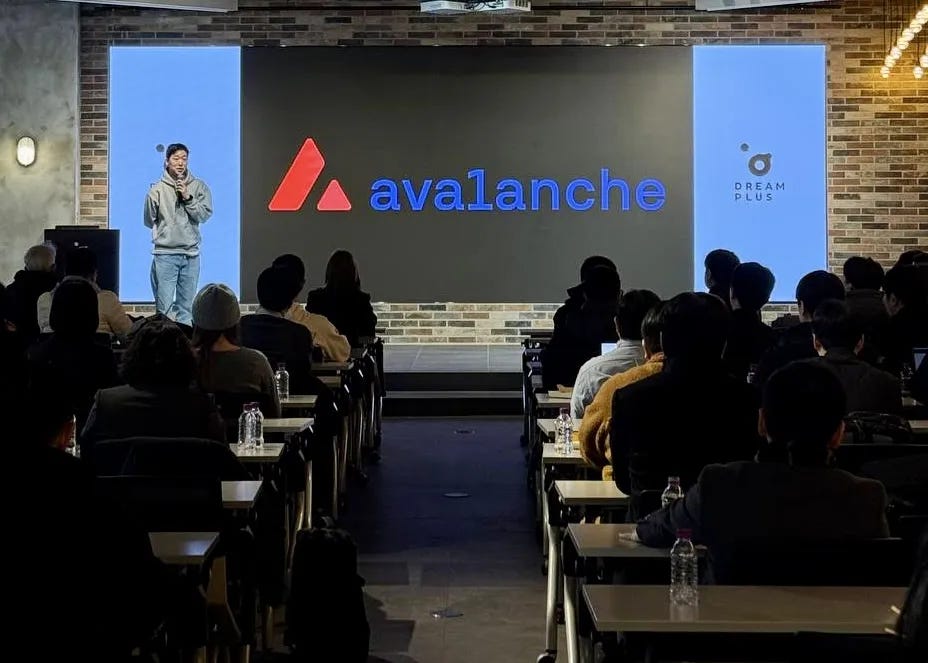South Korea Web3 Market Report Q1 2025: Is South Korea Still a Liquidity Export?
This report, written by Tiger Research , studies the Korean Web3 market in Q1 2025, analyzes its evolution from a liquidity outlet to a structured industry ecosystem, and highlights key regulatory developments and global project initiatives.
Summary of key points
From liquidity export to industrial ecosystem: In the first quarter of 2025, the Korean Web3 market reached a turning point. This market, once regarded as the "liquidity export" of global projects, is transforming into a structured self-sustaining industrial ecosystem.
Impact of the relaxation of corporate account regulations: As part of the Financial Services Commission’s roadmap, institutional entities are gradually being allowed to conduct cryptocurrency transactions through corporate accounts.
Ecosystem construction led by global projects: Projects such as Avalanche, TON, Ripple, and Solana are actively building long-term foundations in South Korea. Their activities have gone beyond marketing and are committed to developer community building and hackathon hosting.
1. South Korea’s Web3 market in the first quarter of 2025: Still just a liquidity export?
Despite active retail participation and ample liquidity, the institutional infrastructure development of the South Korean Web3 market has made limited progress. Regulatory efforts prioritize investor protection over ecosystem development, slowing broader industry growth.
The two main obstacles are: 1) restrictions on the connection between corporate accounts and cryptocurrency exchanges; and 2) high barriers to entry for obtaining a Virtual Asset Service Provider (VASP) license. The inability of companies to connect their corporate accounts to local exchanges makes it legally impossible to convert cryptocurrencies obtained from operations into fiat currency through Korean financial institutions. Although some companies have turned to overseas entities as a stopgap measure, this approach carries regulatory risks and does not provide a sustainable long-term solution.
The high entry barrier for VASP registration has also become a major constraint on market development. Although it is technically feasible for small-scale operations to operate without registration, large-scale projects always face legal and regulatory uncertainties.
These institutional constraints, coupled with investor activity that far exceeds the maturity of the local ecosystem, have led some projects to view South Korea primarily as a channel for acquiring customers. Against this backdrop, it has become difficult to refute the outside world’s simple definition of the South Korean market as a “liquidity export.”
Market developments in the first quarter of 2025 show that South Korea has the potential to shift from a speculation-driven market to an industry revitalization-oriented market. Recent regulatory improvements, such as allowing corporate accounts to trade cryptocurrencies, mark substantial progress in structural change. Under the surface, global projects are steadily building a local ecosystem, supported by an expanding community of builders and the emergence of new initiatives.
The Korean Web3 market is at a critical inflection point. As the ecosystem matures beyond an investor-driven development model, greater long-term value is expected to be generated, supported by institutional readiness and continued investment interest.
2. Institutional progress: allowing corporate accounts to trade cryptocurrencies
In South Korea, restrictions on cryptocurrency trading by legal entities began with the "Park Sang-gi Ban" in 2017. The policy, led by then-Minister of Justice Park Sang-gi, essentially prohibited financial institutions and companies from participating in cryptocurrency trading. Although the guidelines have expired, the practice continues to this day, forming a dual-track system in which individuals can trade within the regulatory framework while legal entities are restricted in their investment and financing activities.
Source: Tiger Research
To address these restrictions, the Financial Services Commission (FSC) officially announced the “Roadmap for Enterprise Participation in the Cryptocurrency Market” on February 13, 2025. The core highlight of the roadmap is the phased lifting of the seven-year corporate cryptocurrency trading restrictions.
Phase 1 (Q2 2025 onwards): Opening accounts to law enforcement agencies, non-profit organizations, and cryptocurrency exchanges for asset liquidation purposes only
Phase 2 (from the second half of 2025): Public companies and professional investors such as registered investment companies are allowed to trade
Phase 3 (mid- to long-term): Full market opening to ordinary enterprises
In the first phase, law enforcement agencies such as prosecutors, tax authorities and local governments have begun to obtain account access to liquidate seized cryptocurrencies since November 2024. Non-profit organizations and exchanges are expected to follow in the second quarter of 2025. The second phase marks a more significant shift. From the second half of 2025, listed companies and professional investment companies will be allowed to trade cryptocurrencies for investment and treasury management purposes.
But most Web3 projects are ordinary companies in the third stage. To obtain the second stage qualification, companies must maintain a balance of at least 10 billion won (about 7 million US dollars) in financial investment products under the Capital Markets Act, and 5 billion won (about 3.5 million US dollars) for externally audited entities - a threshold that most Web3 companies cannot reach. Therefore, most Web3 projects cannot benefit from the new regulations immediately. But the roadmap still indicates a gradual relaxation of regulatory constraints. As the third stage progresses, direct market access for Web3 native companies will become increasingly feasible.
2.1 The positive significance of allowing corporate trading accounts
Laying the legal foundation for Korean companies to conduct Web3 business
Enhance market stability through institutional investors with structured risk management and long-term strategies
Promote the diversification of financial services, including cryptocurrency funds and custody services
Web3 projects often use native tokens to exchange services and resources. However, in South Korea, companies previously had almost no legal way to liquidate acquired crypto assets. The new policy establishes a key entry point for companies to operate in compliance and promotes the formalization of crypto-related business activities.
This progress is expected to be further expanded in the second half of the year, when trading rights will be extended to listed companies and registered institutional investors. Unlike retail investors, corporate investors tend to adopt structured risk management frameworks and long-term investment strategies. Their entry into the market is expected to reduce volatility and support the sustainable development of South Korea's Web3 ecosystem. In addition, broader corporate participation may improve the persistent inefficiencies of the local market - most notably the "Kimchi Premium".
The increase in institutional participants is also expected to broaden the scope of crypto-related financial services. Asset management companies may launch cryptocurrency funds or acquire custodians to provide comprehensive solutions. Fintech companies may develop corporate treasury tools that support crypto account management. These developments will help expand South Korea's Web3 industry by strengthening supporting service infrastructure and attracting more traditional financial institutions.
2.2 Potential risks of allowing enterprises to encrypt accounts
Phased deregulation could lead to supply-demand imbalances, putting downward pressure on prices
The government's efforts to secure tax revenue are expected to intensify as listed companies and institutional investors enter the market.
Conservative risk management by institutional investors may lead to concentrated Bitcoin holdings, raising concerns about declining altcoin market activity
The introduction of corporate accounts could have a substantial impact on retail participants. From a market dynamics perspective, the phased deregulation could lead to an imbalance in buy-sell pressure. According to the FSC’s corporate roadmap, the regulator considers corporate selling activities to be relatively low risk. Therefore, by the end of 2025, only sell-side liquidity may enter the market, leading to downward price pressure. While the expected sell-off volume may remain modest relative to the overall market, low-liquidity tokens may face greater volatility.
On the regulatory level, the government’s efforts to ensure tax collection are expected to intensify once listed companies and institutional investors fully enter the market. Although cryptocurrency taxation has been postponed to January 1, 2027, the presidential election on June 3, 2025 may change the policy direction and deserves close attention.
In terms of investment behavior, corporate capital may flow to Bitcoin. As shown by US Strategy (formerly MicroStrategy) and Japan Metaplanet, institutional investors tend to allocate large-cap stable assets due to conservative risk management. This may lead to a large influx of funds into Bitcoin, or a shock to the altcoin market, where Korean retail investors have historically been highly active. Therefore, the altcoin market may face weakening interest and declining liquidity in the short and medium term.
3. Industrial transformation: strategic layout of global Web3 projects
Following the United States and China, South Korea has become a core strategic market for global Web3 projects. In response, many international teams actively recruit Korean talents and establish substantive cooperation, showing a strategic shift from superficial marketing to building a sustainable, builder-led local ecosystem. This long-term layout not only supports the growth of individual projects, but also enhances the overall competitiveness of South Korea's Web3 industry.
3.1 Project support: pointing out the direction of the industry by supporting mature teams
Source: Avalanche Korea X
Avalanche and TON Foundation are examples of global projects that build ecosystems by directly supporting local Korean teams. After the successful collaboration with MapleStory, Avalanche has expanded its collaboration with small and medium-sized Korean projects. The team holds demo days every quarter to showcase usable products and actively attract users, forming a feedback loop that provides substantial value to projects and participants.
The TON Foundation is taking a more structured approach by launching the "TON Society Korea Builder" program, which includes a formal project database, a systematic support architecture, and expanded network access to strengthen the local TON ecosystem in a scalable manner.
These ecosystem support strategies have produced real results that go beyond short-term exposure or participation indicators. Proven local developers have gained a more stable foundation for growth, and their success stories provide clear guidance for new entrants. At the same time, these initiatives have laid the foundation for the international expansion of Korean projects.
3.2 Hackathon: Cultivating Korean builders and strengthening market potential

The hackathons hosted by XRPL Korea (Ripple) and Superteam Korea (Solana) have gone beyond the scope of a single event and have become a key turning point in the Korean Web3 ecosystem. In March, Ripple held a two-day "DE-BUTHON 2025", which attracted 24 teams and 203 participants. Superteam Korea, in conjunction with 22 global partners, held the "SEOULANA HACKATHON", with more than 300 participants.

The scale and success of these events have helped to reverse the perception of South Korea as a speculation-driven market. The high participation in large hackathons reflects the presence of a strong ecosystem of builders. These events have now become strategic launchpads - providing builders with a clear path to market and bridging the gap between prototyping and actual deployment.
As of Q1 2025, the Korean Web3 industry has begun to show measurable progress, driven by global network-led ecosystem building initiatives (rather than simply capital inflows). Strengthened cooperation with mature players, coupled with developer support programs, is nurturing a new generation of local builders.
These developments mark a new phase of momentum for South Korea’s Web3 sector, and on this basis, South Korean projects are expected to export substantial innovations to the global stage in the coming years.
4. From investment-driven to industry-driven: the turning point of South Korea’s Web3 market
In the first quarter of 2025, the Korean Web3 market will usher in a key transformation - from an investment-driven environment to a mature industrial ecosystem. Regulatory progress, including the phased opening of corporate crypto trading accounts, will lay the foundation for structured market participation. At the same time, the continued ecological construction efforts of global Web3 projects will help the Korean market achieve long-term growth positioning.
Another important milestone was the successful completion of the first real-world transaction by retail users of the Korean Central Bank Digital Currency (CBDC) "Han River Project". At the same time, major commercial banks in South Korea began jointly exploring the issuance of Korean won stablecoins in early April. The Bank of Korea also indicated that it would play a more active role in future regulatory legislation.
In terms of infrastructure, the ongoing discussion on the "one exchange - multiple banks" system indicates a potential structural breakthrough. Under this model, cryptocurrency exchanges will no longer be restricted to a single banking partner and can connect with multiple commercial banks. This move is expected to significantly increase market flexibility and user access.
Taken together, these developments clearly demonstrate the evolution of South Korea’s Web3 sector towards a sustainable industrial ecosystem. After years of regulatory constraints and structural inefficiencies, South Korea is entering a new phase of policy coordination, institutional participation, and the emergence of industrial-level growth.




